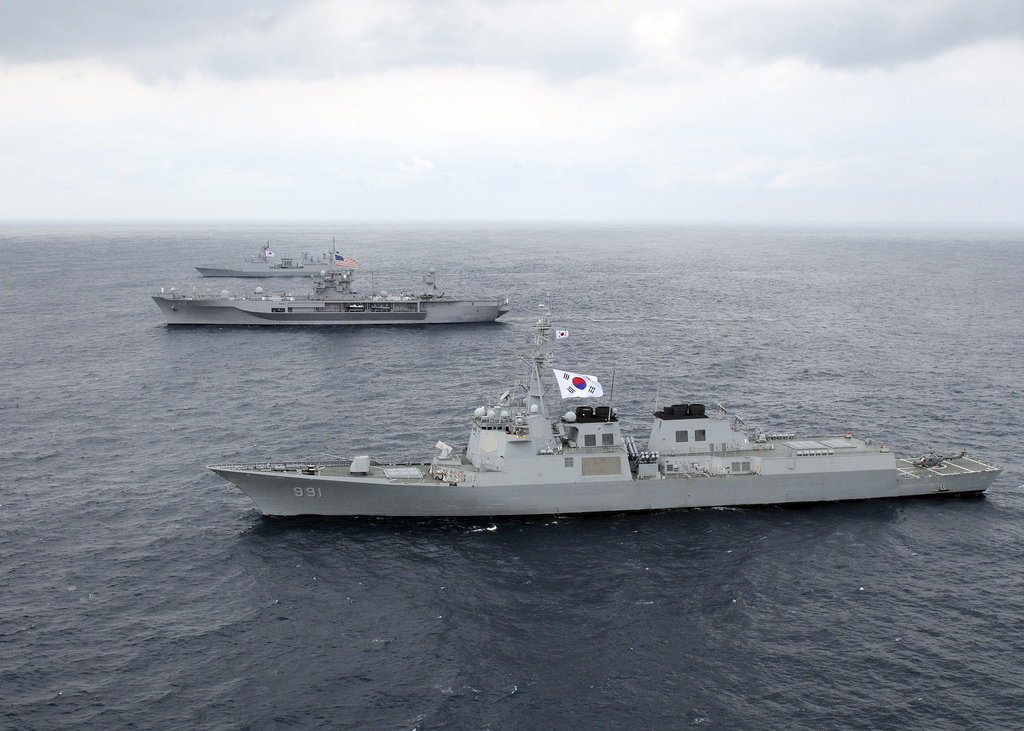The Peninsula
May 2014: Shelling, Testing, and Challenging Inter-Korean Relations

By Nicholas Hamisevicz
Just as April is historically one of the most contentious months for inter-Korean relations, the West Sea and the Northern Limit Line (NLL) have been among the most contentious areas in inter-Korean relations. Multiple firefights, the sinking of the Cheonan, and the shelling of Yeonpyeong Island all took place in this region. North Korea doesn’t accept the Northern Limit Line as a boundary, and the heavy fishing season adds more boats and the potential for misunderstanding. Last week, North and South Korea exchanged fire, again raising concerns about an escalation, especially from a misdirected shell potentially hitting the other’s assets. While tensions between the two Koreas appear to remain high, close coordination among the U.S. and its allies will be needed to both provide security in case of a larger provocation and a potential platform for better inter-Korean relations. However, the actions in May suggest that the need for security will be more predominant in the near term.
Last week, South Korea announced that its navy fired warning shots at North Korean patrol boats that had crossed the NLL. North Korea released a statement saying their ships were chasing out Chinese boats illegally fishing in North Korean waters; moreover, the statement went on to say that all South Korean warships would be “targets of the direct sighting firing by all strike means.” A few days later, South Korea said a North Korea ship fired two artillery shells in the direction of a South Korean warship, and the South Korean warship returned several rounds back toward the waters near the North Korean ship. North Korean again denied it did anything and suggested the Park Geun-hye administration was trying to take attention away from the Sewol tragedy.
North and South Korea have had deadly exchanges in these areas before. While none of those exchanges escalated into a full-blown conflict, it is uncertain if that would be the case now. There is a significant danger that if one of the inter-Korean shells actually hits a target, the two Koreas could start targeting each other with real intent. Kim Jong Un has used multiple opportunities to attempt to demonstrate to the North Korean people that he can lead his country during a military conflict, but he still is inexperienced in the provocation escalation and de-escalation dance on the Korean peninsula. Furthermore, the prospects for escalation are greater in the aftermath of the sinking of the Cheonan and the shelling of Yeonpyeong Island. Since the attacks of 2010, South Korea’s policy has been to respond to further provocations with disproportional force and Park Geun-hye has been clear from the outset of her presidency that she wants the military to respond to military provocations immediately. Given North Korea’s constant testing and gauging of the responses of the United States, South Korea, and the rest of the international community to their actions, the prospect for a less stable situation exists.
These tensions, shellings, and opportunities for misunderstanding between the two Koreas demonstrate why the U.S. and South Korea have to closely coordinate their response to provocations from North Korea. Moreover, U.S. officials need to be constantly inquiring about the state of Park Geun-hye’s trustpolitik policy toward North Korea. Discussions between the two Koreas over protocols for this region have occurred in the past and are possible again for future inter-Korean agreements.
The West Sea and the NLL are dangerous areas for inter-Korea relations. The shellings and interactions in May suggest tensions will remain high between the two Koreas. A Rodong Sinmun piece even conveyed that “inter-Korean relations cannot be saved from total catastrophe” while Park Geun-hye is president. While this may be over-the-top rhetoric from North Korea, under Kim Jong Un North Korea’s rhetoric and actions have been tougher for countries to decipher and respond to in a way that produces a positive response. Inter-Korean relations in May 2014 don’t indicate that process will get any easier.
Nicholas Hamisevicz is the Director of Research and Academic Affairs for the Korea Economic Institute of America.
Photo from Commander, U.S. 7th Fleet’s photostream on flickr Creative Commons.
